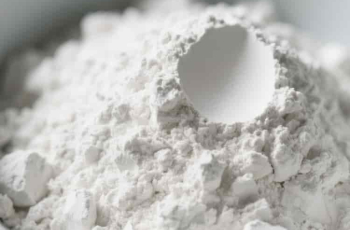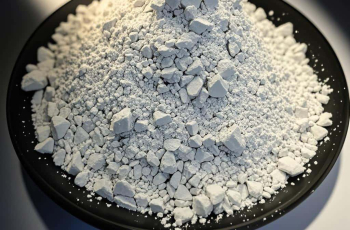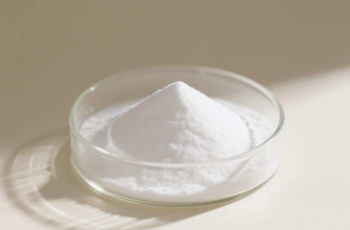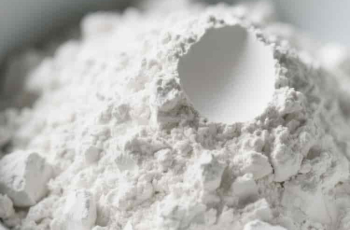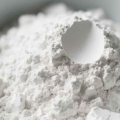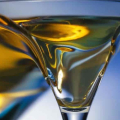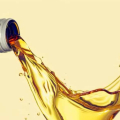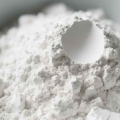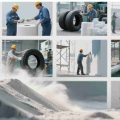- Welcome to China Calcium Carbonate Manufacturer
- WeChat:15078781000
Nano Calcium Carbonate (NCC)
- Category: Calcium Carbonate
- |
- Date: 2025-04-23 09:23
Nano calcium carbonate is synthetic calcium carbonate with a primary particle size of 1–100 nm. It has features like high surface area and purity. Produced via carbonation-precipitation or wet grinding, it boosts material performance in plastics, coatings, etc., and offers cost and sustainability benefits.
Product Details
What Is Nano Calcium Carbonate?
Nano calcium carbonate refers to synthetically engineered calcium carbonate particles with a primary particle size of 1–100 nanometers. Unlike conventional GCC or PCC, its ultrafine structure provides exceptional surface area (20–80 m²/g), high reactivity, and unique optical/mechanical properties, making it indispensable in cutting-edge industries.
Key Features:
Particle Size: 20–100 nm (adjustable via process control).
Surface Modification: Silane, titanate, or polymer coatings for targeted applications.
Purity: ≥99% CaCO₃, heavy metals <1 ppm (ICP-MS verified).
How Is Nano Calcium Carbonate Produced?
1. Carbonation-Precipitation Method
Steps:
Slurry Preparation: React calcium hydroxide with CO₂ under controlled pH/temperature.
Nucleation & Growth: Add crystal modifiers (e.g., polyacrylic acid) to limit particle aggregation.
Surface Treatment: In-situ coating during precipitation (e.g., stearic acid).
Spray Drying: Convert slurry to free-flowing nanopowder.
Advantages:
Scalable production (batch or continuous reactors).
Tunable particle size (20–80 nm).
2. High-Energy Wet Grinding
Steps:
Pre-Grinding: Reduce GCC to 1–5 μm via dry milling.
Nano Milling: Use zirconia beads in planetary ball mills to achieve <100 nm particles.
Dispersant Addition: Polycarboxylates prevent reagglomeration.
Advantages:
Retains natural mineral properties.
Lower energy cost vs. full chemical synthesis.
Technical Specifications of Nano Calcium Carbonate
| Parameter | Specifications | Testing Method |
|---|---|---|
| Primary Particle Size | 20–100 nm | TEM/STEM Imaging |
| BET Surface Area | 20–80 m²/g | Nitrogen Adsorption (BET) |
| Crystal Form | Calcite, Aragonite, or Amorphous | XRD Analysis |
| Oil Absorption | ≤30 g/100g | ISO 787-5 |
| pH (10% Suspension) | 8.5–10.5 | pH Meter |
Customization Options:
Surface treatment (hydrophobic, hydrophilic, ionic).
Particle size distribution (monodisperse or bimodal).
We also provide custom calcium carbonate solutions tailored to your industry’s performance and regulatory requirements.
Why Choose Nano Calcium Carbonate? Core Advantages
Enhanced Material Performance
Plastics: 5–10% loading in PP increases tensile strength by 25% (ASTM D638).
Coatings: Improves scratch resistance (ISO 1518) by 40% at 3–5% loading.
Cost Efficiency
Rubber: Replaces 15–20% of carbon black while maintaining tear strength (ASTM D624).
Sustainability
Enables lightweight composites (e.g., automotive parts reduce fuel consumption by 5%).
Applications of Nano Calcium Carbonate
1. Nano Calcium Carbonate in Plastics & Polymers
Transparent Films: 50 nm particles reduce haze to ≤1.2% in BOPP packaging.
Engineering Plastics: Improves PBT heat deflection temperature (HDT) by 15°C.
For enhanced compatibility in polymer systems, consider using coated calcium carbonate powder with stearic acid or polymer-based surface treatments.
2. Nano Calcium Carbonate in Coatings & Inks
High-Gloss Automotive Coatings: 30–50 nm particles enhance reflectivity (≥90 GU).
UV-Curable Inks: Accelerates curing speed by 20% (ASTM D2454).
3. Nano Calcium Carbonate in Pharmaceuticals
Drug Delivery: 80 nm porous carriers improve API loading by 30%.
Dental Composites: Reinforces resin, reducing shrinkage by 15% (ISO 4049).
4. Nano Calcium Carbonate in Rubber
Green Tires: 40 nm particles reduce rolling resistance by 12% (ECE R117).
Silicone Sealants: Boosts elongation-at-break to 800% (ASTM D412).
5. Emerging Uses
3D Printing: Nano-CaCO₃/PEEK composites enhance layer adhesion.
Water Treatment: Adsorbs 95%+ heavy metals (e.g., Pb²⁺, Cd²⁺).
Nano Calcium Carbonate vs. Conventional PCC/GCC
| Property | Nano CaCO₃ | PCC/GCC |
|---|---|---|
| Particle Size | 20–100 nm | 0.1–15 μm |
| Surface Area | 20–80 m²/g | 1–10 m²/g |
| Reactivity | High (due to nano-scale effects) | Moderate |
| Cost | Higher | Lower |
| Key Applications | Pharma, high-end coatings | Plastics, paper, construction |
Quality & Safety Certifications
Pharma Compliance: USP-NF, EP, ICH Q3D (elemental impurities).
Food Safety: FDA 21 CFR 184.1409. EU 10/2011.
Eco-Labels: REACH, RoHS, ISO 14001.
FAQs About Nano Calcium Carbonate
Q: Is nano calcium carbonate safe for biomedical use?
A: Yes, when compliant with USP <467> and ISO 10993-1 biocompatibility standards.
Q: How to prevent nanoparticle agglomeration?
A: Use ultrasonic dispersion or pre-dispersed slurry formats (30–50% solid content).
Q: Can nano CaCO₃ replace silica in tires?
A: Partially. It reduces rolling resistance but requires blending with silanes for wet grip.
Order Nano Calcium Carbonate
Samples: Free 100g trial packs with SDS and COA.
Packaging: Moisture-proof bags (1–25 kg) or bulk supersacks.
Support: R&D collaboration for custom surface modifications.


